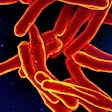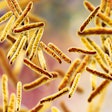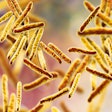
Researchers from the Broad Institute of MIT, Harvard, and Princeton University have developed a low-cost paper strip test that uses CRISPR to distinguish between the two main types of seasonal influenza, A and B, as well as subtypes H1N1 and H3N2.
Furthermore, the test can also identify strains that resist antiviral treatment and could potentially be adapted to detect swine and avian flu strains, including H5N1, currently causing an outbreak in cattle.
Results from the test, described in an article in The Journal of Molecular Diagnostics, show that the test, which was designed to be rapid, affordable, and easy to deploy at point-of-need is also accurate at distinguishing the types and subtypes of influenza, achieving results in 100% concordance with traditional polymerase chain reaction (PCR) assays.
The test is based on a technology called SHINE, which was developed in 2020 by the lab of co-author Pardis Sabeti, an institute member at the Broad and a professor at Harvard University and the Harvard T.H. Chan School of Public Health, as well as a Howard Hughes Medical Institute investigator. SHINE uses CRISPR enzymes to identify specific sequences of viral RNA in samples.
The team’s aim was to create low-cost, rapid tests that could be deployed in clinics or in the field rather than in hospitals or diagnostic labs, and that didn’t require expensive equipment to run. Accessible, efficient testing technology not only improves clinical care, but also may potentially improve outbreak management, making it easier for scientists to collect samples strategically to better monitor viral spread.
In contrast to typical diagnostic assays such as PCR which may require lengthy processing times, extensive training for personnel, and specialized equipment, SHINE testing can be performed in about 90 minutes at room temperature, and only requires an inexpensive heat block to warm the reaction.
The researchers first used SHINE to test for SARS-CoV-2, later adapting it to distinguish between the Delta and Omicron variants. They began adapting the assay to test for influenza viruses in 2022.
In the future, the team said in a story from the Broad Institute, the assay could be adapted to distinguish between different viruses with similar symptoms, such as influenza and SARS-CoV-2.



















